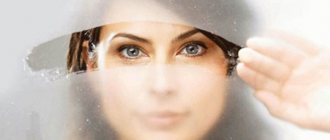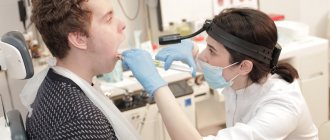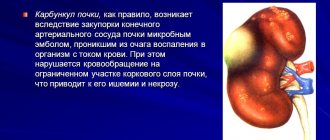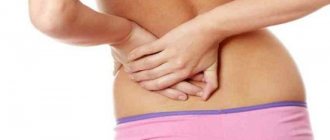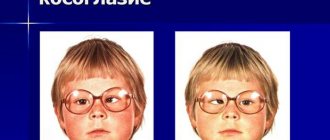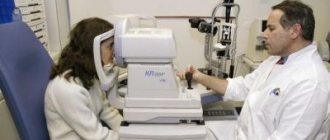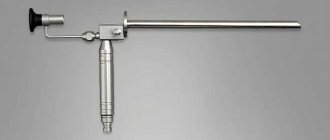What are the causes of apnea?
The most common causes of sleep apnea are:
- excess weight;
- constant stress;
- dysfunction of the endocrine system, especially the thyroid gland;
- congenital or acquired structural features of the upper respiratory tract, for example, narrowing of the nasal passages;
- heredity;
- excessive consumption of strong alcoholic drinks.
Overweight
Excess weight is one of the most important factors in the occurrence and development of apnea. Moreover, here a large body mass should be directly released, which leads to difficulty breathing, since the respiratory muscles have to make much more effort to carry out movements of the chest and diaphragm. This leads to a decrease in the pressure of drawing air into the lungs and an increase in the width of the neck, which leads to a decrease in the tone of the upper respiratory tract. Do not discount the factor of overeating before bed, which is typical for obese people. Sleeping with a full stomach is a direct path to the development of apnea, the treatment of which will be complicated by all the problems associated with obesity.
Stress
The stress that abounds in our lives is also a serious negative factor that accelerates apnea. The impact of stress on the functioning of the respiratory centers is indirect, since they trigger psychological mechanisms of malfunctions in the central and peripheral nervous systems. The sleep of a person exposed to stress is restless, with obvious disturbances in the order of alternation of sleep phases, which is typical for the sleep of a person with apnea.
Hormonal imbalances
If we talk about the influence of hormonal imbalances on the development of such a disease, then we should primarily link the disorders associated with the functioning of the thyroid gland, pancreas and ovaries. Moreover, the consequence of failures in the first two cases is often excess weight.
Features of the structure of the respiratory tract
Features of the anatomical structure of the skull, neck and upper respiratory tract or their transformation due to injuries, as well as infectious diseases, are also factors in the occurrence of periodic respiratory arrests during sleep. Narrowed airways, growths, curvatures and other congenital or acquired defects lead to a decrease in the effective cross-section or elasticity of the upper respiratory tract, which is an undoubted risk factor.
Heredity
The hereditary factor in the occurrence and development of apnea is currently still being studied, but it is closely associated with congenital changes in the shape of the airways and their patency. Statistical data from surveys of several generations of close relatives testify in favor of this hypothesis. Therefore, if your ancestors suffered from this disease, it is necessary to undergo examination.
Effect of alcohol
Excessive consumption of strong alcoholic beverages provokes inhibition of the respiratory center of the brain and leads to the need for a much longer period of time for emergency awakening, which causes significant harm to the body. The combination of strong drinks with a large meal before bed is especially dangerous. Even for a healthy person there is a real threat of death, not to mention those who are at risk or have a confirmed diagnosis.
Why is obstructive apnea dangerous?
Stopping breathing leads to oxygen starvation. This in turn stimulates the brain, forcing it to wake up in order to avoid death from suffocation. In this case, what usually occurs is not a complete awakening, but a short-term transition to a state of drowsiness, which in most cases is not stored in the patient’s memory. However, this time is enough to increase muscle tone, restore patency of the upper respiratory tract and normalize the breathing process. After the blood is sufficiently saturated with oxygen, the person falls back into sleep, muscle tone decreases again, and the whole cycle of abnormal respiratory events repeats again and again.
Patients with severe sleep apnea may experience pauses in breathing almost every minute, resulting in one-third to one-half of the time they spend sleeping without breathing at all and may develop severe respiratory failure.
Emergency micro-awakenings that allow a patient with sleep apnea to breathe present stress to the body, accompanied by a release of adrenaline, which causes vasospasm and overload of the heart. Combined with oxygen deprivation caused by episodes of sleep apnea, this leads to accelerated wear and tear of the cardiovascular system.
In addition, micro-awakenings caused by episodes of obstructive apnea disrupt the normal structure of sleep, making it ragged and superficial. As a result, those deep stages of sleep, during which complete rest and analysis of the information accumulated during the day occur, almost completely disappear. Instead of normal sleep, such a person spends most of the night in an unsuccessful struggle for his own breathing.
Apnea in children
Stopping night breathing occurs not only in adults, but also in children. Let us immediately note that it is important for parents not to confuse periodic breathing with apnea.
Let's explain what it is:
The main thing is to look at the duration of the absence of inhalation. If the interbreath interval is less than 10 seconds, breathing is considered simply periodic, and the newborn baby will regulate it himself.
After this, you need to monitor how the child will continue to breathe. An even rhythm means that there is no need to worry, this is the norm for up to 6 months. If the children are older and the breathing process does not change, a medical consultation is needed.
Causes of childhood apnea:
- The most common factors are prematurity, birth before the 34th week weighing up to 2.5 kg. Such babies have an immature central nervous system, and the brain does not know how to control the breathing muscles.
- Partial blockage of the airways, hereditary weakening of the muscles of the larynx.
- Unbalanced breathing at six months of age can be caused by heart failure or reflux, asphyxia or convulsions, meningitis or pneumonia.
- Up to a year, apnea can appear due to pathology of metabolic processes, if the baby needs medications that depress the respiratory center, with intracranial bleeding and enterocolitis.
- After a year, common causes of breathing problems are adenoids or inflamed tonsils.
And in children, as in adults, apnea can occur due to excess body weight. Excess weight puts pressure on the diaphragm, making breathing difficult. Breathing may also stop due to skeletal deformation in the maxillofacial area. All this leads to the accumulation of carbon dioxide in the blood. The brain's reaction is to produce stress hormones so that the heart rate increases and the child wakes up.
To treat such an unpleasant disease as apnea, it is necessary to determine its type.
What it is
There are many sleep disorders that negatively affect human health and condition. However, there are pathological processes that lead to serious consequences. One such phenomenon is considered to be nocturnal suffocation or apnea.
The period of suffocation lasts no more than a few minutes, since the human brain receives an impulse about oxygen deficiency and the patient awakens. However, the condition brings negative changes.
Nocturnal apnea during sleep occurs during the deep phase. After awakening, the patient does not remember that he experienced a lack of air, but notes a lack of vitality and a clear desire to sleep.
Chronic form:
- impairs sleep quality;
- provokes hormonal imbalance;
- promotes the development of arterial hypertension;
- disables the functions of many body systems.
It often causes metabolic disorders, causing a person to rapidly gain weight.
Without treatment, the risk of diseases of the lungs, heart, brain and blood vessels increases. The reason lies in the constant lack of oxygen.
Against this background, hypoxia is formed, which is aggravated by frequent attacks of apnea.
Kinds
There are several types of pathology.
- By time of attack: partial and complete.
- Depending on the provoking factor: obstructive, mixed and central.
- According to the degree of manifestation and number of attacks per night: mild, moderate, severe.
Apnea classification
Obstructive apnea
This type of disease is the most common. Hypoxia occurs due to difficulty passing air through the nasopharynx during sleep. Men aged 40 to 60 years are more susceptible to this type of disease, since they have more weight than women and more often suffer from addictions. In addition, men's necks are much wider than women's. Therefore, women may be at risk for obstructive apnea during menopause, when their weight increases and their neck becomes wider, which increases the load on the tissues of the upper respiratory tract.
Central apnea
This type of apnea is quite rare and is associated with disruption of the central nervous system. It usually occurs after injuries or diseases of the brain, as a result of which those of its centers that are responsible for the breathing process are damaged. Central apnea most often affects women, since changes in the activity of the central nervous system usually occur against the background of strong hormonal fluctuations associated with the progressive development of certain gynecological diseases, for example, polycystic ovary syndrome. Also at risk are patients diagnosed with diabetes mellitus and gastroesophageal reflux disease, in which acid reserves from the stomach flow into the esophagus with subsequent irritation and spasms in the larynx, which leads to blockage of breathing.
Mixed apnea
In the case of mixed type apnea, there is simultaneously a disruption of the central nervous system and difficulty in getting oxygen into the lungs due to problems in the respiratory tract. This type of disease is not as widespread as obstructive, but poses an increased threat to health.
How is the syndrome treated?
Three out of four patients with apnea already have a moderate or severe degree of the disease at the time of diagnosis - respectively, more than 15 or more than 30 pauses in breathing per hour. Usually these are obvious symptoms (reason for contact) and high risks.
The vast majority of these patients are prescribed CPAP therapy. Every night they use a special device. It supplies air under slight pressure into the respiratory tract through a mask. The air stream does not interfere with breathing, but straightens the walls of the pharynx, preventing them from vibrating during breathing (snoring) and collapsing (apnea).
With CPAP therapy, from the very first night a person begins to breathe quietly, without stopping breathing. Since there are no asthma attacks, other symptoms disappear, and the risks of the disease are reduced to the population average. The person is healthy: if you don’t take into account the fact that he has to use the device every night. More than 50 million patients around the world successfully use the CPAP method.
But:
- There are people who do not even dare to start treating sleep apnea with the help of a device. The method seems strange, socially unacceptable, and unusual to them. They are afraid of lifelong treatment. They refuse it. They remain with their interests, their symptoms and, alas, their risks.
- There are people who use CPAP successfully for a long time, but they remain obese. And obesity is dangerous to health: it provokes the same hypertension, atherosclerosis, heart disease, diabetes mellitus...
There is a third option: patients who simultaneously undergo CPAP therapy and exercise their weight under the supervision of a doctor. It is these people who lose weight, get rid of the device, and restore normal breathing during sleep.
Symptoms of apnea in adults and children
Apnea is one of those disorders that is not easy to diagnose. Many signs of nocturnal breathing problems coincide with the clinical picture of other diseases. In medicine, the following are considered to be true symptoms of apnea in adults:
| Symptoms of apnea in adults | ||
| Daytime | Night | General symptoms |
| Sudden loss of concentration | The appearance of severe snoring, which is already disturbing the household | Sharp attacks of fear (both day and night, in the form of dreams) |
| Fatigue, decreased performance | Difficulty falling asleep and long awakening | Uneven, rapid breathing |
| Apathy and drowsiness in acute form | Irregular breathing, restless, interrupted sleep | Discomfort in the throat or nasopharynx, headaches |
| Feeling of dry mouth, discomfort in the throat and constant headaches in the morning | Acute awakenings due to inability to breathe air | |
| Irritability and depression | Development of enuresis, realistic and, as a rule, unpleasant dreams | |
| Pain syndrome behind the sternum in the heart area | Systematic insomnia and sudden attacks of fear | |
| Sudden mood swings | High degree of sweating | |
| Development of impotence (men), lack of attraction to the opposite sex | Sleepwalking | |
| Sudden loss of concentration | Frequent teeth grinding and increased saliva production |
Childhood symptoms
In children, apnea can be recognized by the following symptoms:
- The child’s chest does not move when inhaling
- The heartbeat slows down and a bluish discoloration appears on the face, especially on the upper lip
- Frequent breathing through the mouth appears, similar to how a child breathes when awake. This is the first sign that the oxygen entering through the nose does not satisfy the body's needs, and children compensate for its lack in this way.
- Difficulties during swallowing are very noticeable, since the airways are somewhat blocked
- Such children may not hold urine. This occurs due to problems in the central nervous system.
- Heavy sweating. This is how discomfort in sleep is expressed due to insufficient functioning of the central nervous system.
- The child's posture during sleep is alarming. He places his head in such a way that the larynx is not blocked. This is how children try to eliminate air deficiency
Causes
The main cause of the pathology is the increased relaxation of the muscles of the pharyngeal ring, which maintain the tone of the tonsils, tongue and upper palate.
During excessive relaxation, the muscles close completely or partially and block the windpipe.
Such provoking factors can cause such a phenomenon as:
- diseases of the upper and lower respiratory tract: runny nose, sinusitis, bronchitis, pneumonia, etc.;
- the use of drugs with a sedative effect and sleeping pills;
- consumption of alcoholic beverages or alcohol dependence;
- diseases of the cardiovascular system in which blood supply is impaired;
- pathological processes of the central nervous system that cause a false impulse to frequent muscle spasms;
- hereditary predisposition;
- excess body weight - adipose tissue is deposited on the neck and diaphragm, which in both cases leads to increased pressure on the respiratory organs;
- endocrine diseases: diabetes types 1 and 2;
- changes in hormonal levels, for example, during pregnancy or menopause;
- congenital anomalies of the structure of the jaw and respiratory tract: deviated septum, large movable muscle (tongue), physiologically enlarged tonsils;
- gender: according to statistics, men are more susceptible to attacks of suffocation than the fair half.
Often the cause of the disease lies in the age characteristics of the patient.
In children
In infancy, the disease manifests itself for the following reasons:
- prematurity;
- underdevelopment of the structure of the bronchi;
- intrauterine infections;
- developmental anomalies;
- anemia;
- hypoglycemia;
- birth injuries.
In preschool children, sleep apnea can be caused by the following disorders:
- adenoid vegetation;
- drug therapy;
- runny nose;
- injuries;
- structural changes.
Causes of sleep apnea in teenagers can include:
- hormonal imbalance;
- psycho-emotional experiences;
- mechanical injuries.
In adults
In men and women, the following factors can trigger attacks of sleep apnea:
- diseases of the respiratory system and cardiovascular system;
- taking sedatives;
- diabetes;
- thyroid diseases;
- obesity;
- pathological processes of the nervous system;
- disruption of the central nervous system;
- mental disorders;
- VSD is a provoking factor.
In the elderly
In older people, the manifestations of breathing disorder during sleep can be caused by:
- age-related weakness of the muscular system;
- excessively loose fiber;
- scanty secretion of mucous secretion;
- chronic heart and lung diseases;
- hypertension;
- History of ischemic heart disease.
How is the disease diagnosed?
In order to promptly begin treatment for a disease such as apnea, specialists often require the help of the patient’s relatives. Most often, it is the spouses who are the first to notice that their partner suddenly stops breathing in his sleep. Typically, such stops represent a frightening lull after rhythmic and loud snoring, at the end of which the person lets out a loud snore and finally takes a breath. Concerned relatives try to convince the sick person to see a doctor for treatment.
Rules for diagnosing sleep apnea
| Symptoms | Additional Notes |
| Breathing pauses during sleep | |
| Loud or intermittent snoring | |
| Increased daytime sleepiness | |
| Frequent urination at night | 3 or more times per night |
| Long-term sleep disturbance at night | Over 6 months |
| Arterial hypertension | Especially at night or in the morning |
| Obesity | 2,3 or 4 degrees |
- ATTENTION TO PATIENTS: If there are 3 or more of these signs, then you need to conduct a more detailed examination for sleep apnea and, if diagnosed, immediately prescribe treatment.
- THIS IS IMPORTANT: The presence of ONLY 1 FIRST SIGN is also a reason to visit a doctor!
To make an accurate diagnosis, the patient undergoes polysomnography. This is a comprehensive study that combines:
- electroencephalography of the brain,
- electrocardiogram,
- electrooculography,
- pulse oximetry
- determining the air flow entering the nasopharynx.
Diagnosis of sleep apnea
The doctor recommended polysomnography (PSG) to Andrey - an overnight sleep study, and explained to him why it was needed: to establish an accurate diagnosis, severity, causes, and other important details of his condition. Based on this, effective treatment can be selected.
The procedure can be performed at a sleep center or at home. Andrey chose polysomnography at home. He did not have to take time off from work - the procedure took only one night. He slept in familiar home conditions, without experiencing the discomfort of having to spend the night in an unfamiliar place.
In the evening, a nurse came to him to install the sensors, returned in the morning and removed them. Within 24 hours, the staff decrypted the data. The patient was invited for a second consultation with a somnologist.
Polysomnography is the most accurate method for diagnosing snoring and apnea. According to international standards, without conducting this study, the doctor has no right to prescribe treatment.
After studying the results of polysomnography, assessing the combination of causes and severity of apnea, the doctor chooses the most effective treatment that will help the patient restore healthy breathing during sleep.
IMPORTANT! Even if you “just snore,” even if you are sure that you do not have apnea, you still need to undergo polysomnography. There may not be pauses in breathing at the beginning of the night, but they may occur in deep sleep, in the middle of the night, when no one around you can simply see it. There are opposite situations: relatives are frightened when they see a person’s respiratory arrest, but objectively he has so few of them that this does not need correction. It is only possible to reliably assess the presence and severity of the disease through examination.
How are different types of apnea treated?
Depending on the type and characteristics of apnea, surgical or therapeutic methods may be used in treatment.
Non-surgical treatments
- CPAP therapy. This is the most effective treatment method, which uses a special apparatus to restore normal breathing. In the vast majority of cases of apnea, treatment with a CPAP machine is effective;
- use of devices for the nasopharynx to ensure free breathing;
- course of medication. Drug treatment of apnea is usually carried out if the disease is central or mixed.
CPAP therapy devices
Cardiorespiratory system Polymate YH-1000C more details >
RUB 287,400
Buy
WEINMANN PRISMA 20A with humidifier more details >
115,000 rub.
Buy
Basic CPAP (CPAP) device ResMed S9 Escape with humidifier more details >
RUB 53,500
Buy
Philips Respironics PR System One REMstar Auto A-Flex with humidifier more details >
RUB 74,900
Buy
Basic CPAP DeVilbiss SleepCube Standart with humidifier more details >
RUB 52,500
Buy
Basic CPAP DeVilbiss SleepCube Standard without humidifier more details >
RUB 45,400
Buy
Surgical methods
These methods of treating apnea are used in cases where therapeutic treatment does not bring the desired result. These include:
- tonsillectomy - removal of the tonsils of the palate;
- septoplasty - correction of the nasal septum;
- implantation of implants that ensure unhindered passage of air through the upper respiratory tract.
Timely diagnosis, proper treatment and prevention of apnea will significantly improve the patient’s well-being and restore normal performance. Moreover, they will prevent serious problems associated with brain hypoxia and heart failure, which often arise as complications.
In this video you will learn more about the symptoms and treatments for sleep apnea.
Assessing daytime sleepiness
Another method of self-diagnosis of breathing disorders during sleep is based on identifying excessive sleepiness characteristic of obstructive apnea. A simple and fairly accurate tool for quantifying this symptom of apnea is the so-called Epworth Daytime Sleepiness Scale. You are asked to guess whether you can doze off or even fall asleep in various life situations, and evaluate the probability of this event in points (0 - never; 1 - slight probability; 2 - moderate probability; 3 - high probability):
- Reading while sitting
- Watching TV
- Passive participation in social events (at the theater, at a meeting, etc.)
- As a passenger in a car (if the trip lasts at least an hour)
- If you lie down to rest after lunch in the absence of other things to do
- Sitting or talking to someone
- Sitting quietly after eating (without drinking alcohol)
- Driving a car stopped for several minutes in a traffic jam
Now add all the points together. The resulting value characterizes the degree of daytime sleepiness. Already with a sleepiness level of more than 5 points, the number of respiratory pauses during sleep is often higher than normal, and if you end up scoring more than 10 points, then most likely this indicates a severe form of obstructive sleep apnea.
Summarizing both questionnaires, we can say that the combination of two main symptoms of night apnea - snoring during sleep and daytime sleepiness - is a good reason to see a doctor and undergo a special examination.
Based on symptoms and complaints that may indicate the occurrence of episodes of sleep apnea, it is possible, with varying degrees of probability, to assume that the patient has obstructive sleep apnea syndrome. However, in order to make a final diagnosis and, which is fundamentally important for the correct choice of treatment tactics, to clarify the severity of the disease, special diagnostic equipment is used.
Prevention of apnea BEFORE and AFTER treatment
Apnea is not a harmless breathing disorder, as the increase and intensification of symptoms over time causes serious complications. Therefore, prevention is needed both before and after treatment.
"BEFORE"
Before therapeutic measures, prevention makes it possible to identify the causes of the disease and suppress their further development:
- In the first place is timely examination of somatic diseases and their treatment. We are talking about the thyroid gland, brain, ENT organs, lungs and heart. Systematic monitoring of sugar levels, thyroid hormones, and blood pressure are mandatory parts of the preventive program.
- Control of body weight and its systematic reduction if the excess is more than 10% of the standard is of great importance.
- It is very important to give up habits that are always and everywhere considered harmful. These include alcohol and smoking, stress and a night work schedule.
- You cannot do without regular aerobic exercise - swimming and walking, competitive sports and cycling.
If breathing difficulties are caused by anatomical defects, then you should think about surgical correction of a deviated nasal septum or enlarged tonsils.
"AFTER"
When apnea is over, this does not mean that you can now “release the brakes.” Patients must follow simple rules aimed at consolidating the positive results achieved.
- Eat a low-calorie, vitamin-rich diet
- Limit your intake of carbohydrates and fats, especially hard fats
- Eat food no later than 3, or preferably 4, hours before going to bed
- You may benefit from sleeping on your side or stomach. Place your head and spine at the same level in bed
- Ensure normal humidity in the sleeping area
To prevent the disorder from returning or worsening, practice going for a massage. A good help is soothing baths before bed. This will allow you not only to get a good night's sleep, but also to forget about restless nights forever.
Is snoring harmful?
“Apnea may not manifest itself in any way, especially at the initial stage,” explains the head of the sleep medicine department of the First Moscow State Medical University. I. M. Sechenova Mikhail Poluektov . - A slight delay in breathing cannot be noticed or heard - neither by the person himself nor by those around him. As a rule, patients consult a doctor already in advanced stages.
The main thing that should alert a person is snoring. This is the main indicator of trouble, which indicates that during the respiratory cycle (inhalation and exhalation), air does not pass correctly through the respiratory tract and vibrates the soft structures of the pharynx (the tongue that flutters and produces the rumbling sound of snoring). If, in addition to snoring, a person complains of shallow and restless sleep, daytime sleepiness, and morning fatigue, there is every reason to believe that apnea is the basis of these complaints.
To clarify the diagnosis, polysomnography is performed (registration of vital signs during sleep). This is a reliable, but complex and expensive method that is only possible in a clinical setting. Therefore, an abbreviated study is often performed: cardiorespiratory monitoring. Such testing can be done at home, and the information received will be enough for the doctor to confirm the diagnosis.”
Killer snoring. Why are night trills dangerous? Read more
Treatment of apnea with folk remedies
Modern treatment for sleep apnea is aimed at eliminating the factors causing the problem. These are not only medications, surgery or CPAP therapy, but also traditional medicine. Using folk remedies in combination with doctors’ recommendations is a good additional way to get rid of apnea.
It is worth using those folk remedies that contain natural substances of plant origin. The following are options that allow you to become, as practice shows, an excellent help in “traditional” treatment:
- Cabbage juice has long been used to treat breathing disorders. You need to add a teaspoon of honey to one glass of liquid, always freshly squeezed. Maybe a little more. The drink should be consumed every evening before bed for at least 1 month.
- Sea buckthorn oil. It will be enough to bury it in your nose, in each nostril, before going to bed for 2-3 weeks. The volume of one serving is 5 drops. This method will help eliminate the inflammatory process in the nasopharynx. The oil also has a healing effect and restores blood circulation in the tissues well.
- Carrots are an equally effective therapeutic remedy against snoring. It should be eaten baked. 1 root vegetable per 1 dose is enough. Take before breakfast, lunch and dinner - that is, 3 times a day.
Among the herbs that will help cope with breathing problems, the most effective are:
- Fenugreek. This herb has a good expectorant effect. It is useful for colds, and its seeds reduce the risk of heart disease and normalize cholesterol levels. True, the seeds have a rather bitter and pungent taste. But it can also be easily removed by soaking it in water. You need to hold them for several hours.
Soaked seeds without bitterness should be chewed well and eaten. A small handful “the width of your palm” will be enough. Therapeutic course – from 2 to 3 weeks. You can also grind the fruits in a coffee grinder and add 200 grams to them. hot water and drink it all before bed. If this option suits you, then do it for 3 to 5 weeks. The results are felt towards the end of the course.
- Eucalyptus, or rather its oil, is also an excellent remedy. It will free the nasopharynx from harmful bacteria. This method is safe and can be used even for children. The oily mass very gently promotes the removal of mucus, which is valuable for colds.
Up to 3-4 drops of oil are added to hot water and immediately begin to inhale the healing steam for five minutes. This is a productive product for inhalation; it is often used to fill an aroma lamp.
- Thyme. Its herb perfectly protects sleep, calms the nerves, which eliminates respiratory disorders, and makes sleep sound and restful.
Thyme oil is also used. It is added to clean water and thoroughly sprayed in the sleeping area daily. If you use a humidifier, add it directly to the device flask. In addition, thyme decoction will also relieve the problem. Place sprigs of the plant directly into the tea. Mint decoction has similar effects.
In addition to fruits, seeds and herbs, the following procedures are deservedly considered excellent options for traditional therapy:
- Moisturizing the mucous surface of the nose and throat with salt water. Do this before bed. You need to pour salt water into your palm and draw it in through one nostril, while closing the other. After this you need to blow your nose. Do the same with the second nostril. The mixture is prepared as follows: you need a teaspoon of rock salt, you can also dissolve sea salt in a glass of water. The temperature should be pleasant, warm. It is important that the salt does not contain dyes or additives. The duration of one procedure is up to 20 minutes.
- Yoga class. The exercises are the simplest, they are performed 25 times in the morning, and can be repeated before bed. If you push your tongue as far forward as possible, lowering it towards your chin, and hold it for 2 seconds, this is useful for eliminating respiratory disorders. To enhance the effect, you need to press on your chin and move your jaw with some force.
And one more thing - namely... singing. Don’t be surprised, this is also a way to get rid of the initial form of respiratory distress, perhaps not a “folk” one, but rather a “physical education” one. 30 minutes every day. Singing, that is, tensing the larynx, will strengthen its muscular corset.
Of course, folk remedies themselves will be, to put it mildly, useless without “medical” treatment. Therefore, remember that “non-traditional therapy” will help eliminate breathing problems, provided that all doctor’s instructions are strictly followed.

